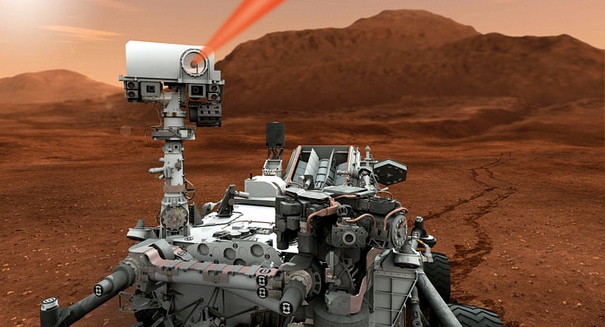
Scientists have been getting readings of methane on the Red Planet that has been puzzling them -- but now they suspect that Curiosity is pulling their legs.
It’s a question that has plagued scientists for decades: is there methane on Mars?
The question first came up when the Mariner 7 spacecraft detected some methane near the south pole of Mars about 50 years ago, a finding that was later retracted after scientists determined it came from carbon dioxide ice, and then telescopes on Earth as well as orbiting spacecraft spotted methane clouds in 2003 and 2004 in Mars, but those clouds vanished a few years later sparking questions about the validity of the earlier assumption. And now, the Curiosity rover, after multiple unsuccessful attempts to detect methane on the Red Planet between 2012 and 2013, detected a burst of methane gas in four measurements over two months — causing that speculation to mount again, according to a Yahoo News report.
But now, some are suggesting that Curiosity rover is giving scientists false readings of methane.
Why is it important to discover methane on Mars? It would show that the planet is a lot more alive than scientists had believed, which could mean there are still possibilities of geological or even biological life on what had been seen as a dead planet.
One scientists at NASA’s Ames Researcher Center in California said at a recent seminar that he was convinced that although he was seeing signs of methane, it is probably coming from the rover itself. After all, he poitned out, the rover has a chamber that has a high concentration of methane — 1,000 times higher than that of the “puff” of methane that it had detected in the atmosphere of Mars.
However, others disagreed, arguing that although the concentration of methane on the rover may seem high it is quite small due to the size of the chamber, and therefore to detect the amount of methane that scientists did, it would lead a large amount of pure methane leaking.